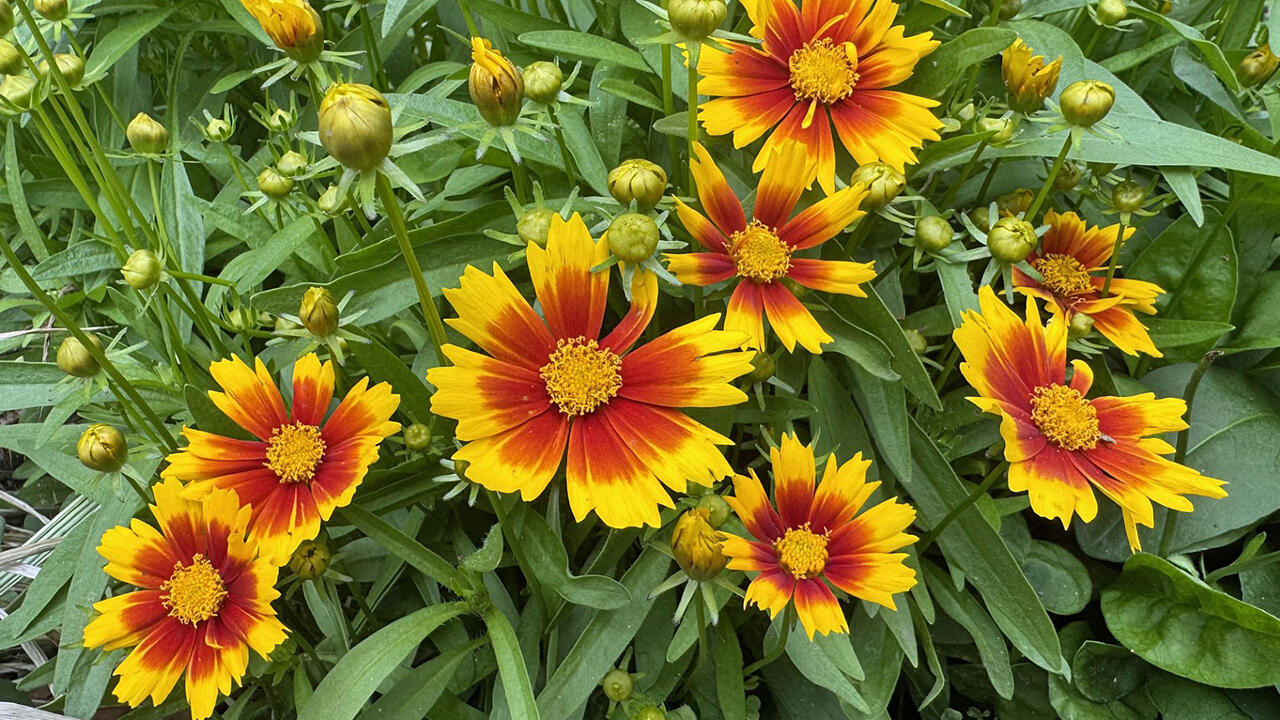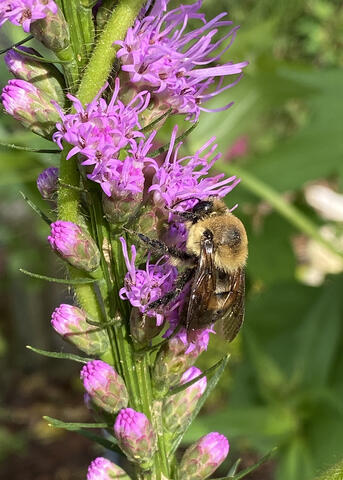The last group of native plants I want to highlight during Native Plant Month are those that pollinators can’t resist. Some of my favorites in this group are liatris, coreopsis, gaillardia and gaura.
These plants are beautiful and bring life to my garden through the pollinators they attract. With the right care, they truly thrive.
Liatris, which is known as blazing star or gayfeather, produces tall, upright spikes of feathery purple blooms. Each tall spike is made up of lots of tiny individual flowers packed with nectar, which gives pollinators a buffet in one spot.
My liatris is growing in full sun and part shade. Once established, these plants are very drought tolerant. You can cut back the flower stalks in late fall to clean up the garden or leave them for winter interest and to let birds enjoy the seeds.
Coreopsis, which is also called tickseed, is one of the carefree native perennials in my garden. It lights up the space with cheerful blooms that vary in shades of yellow, depending on the variety.
My coreopsis is planted in full sun and well-drained soil. Avoid overly rich soil to prevent the plant from becoming floppy. I water them moderately and deadhead spent flowers to encourage continuous blooming. Shear lightly after the first flush of flowers to keep them tidy and stimulate new growth.
Some varieties reseed easily, while others return reliably year after year, providing many years of enjoyment.
Gaillardia, or blanket flower, is a heat- and sun-loving plant that blooms in fiery shades of red, orange and yellow. It thrives in poor, sandy or well-drained soil and needs very little fertilizer. In fact, too much feeding can reduce flowering.
Once established, gaillardia is incredibly drought tolerant, although I do water my plants during long dry spells in the summer. Deadhead regularly to keep it blooming, and divide older clumps every few years to maintain their vigor. Leave seed heads on the plants for added winter interest and for the birds.
Gaura, often called whirling butterflies or bee blossom, is another graceful addition that I adore. Its delicate wands of white or pink flowers flutter in the breeze and seem to dance above the foliage. Bees and butterflies are drawn to gaura all season long.
I grow gaura in full sun and very well-drained soil. It’s important not to overwater, especially during rainy periods because it can be prone to root rot. Once established, this plant is extremely drought tolerant.
I prune gaura back in early spring to encourage bushy new growth. I also give it a light trim in midsummer to prevent it from looking leggy and to encourage a second bloom in late summer.
Gaura adds a soft, airy texture to the garden and blends beautifully with bolder perennials.
Having these native plants in my landscape supports pollinators and creates a colorful, low-maintenance garden that reflects the beauty of our natural environment. Becoming a place where you can watch bees buzz, butterflies flutter and flowers sway in the breeze is one of the best rewards a garden can give.
Images
Contacts
-
 Extension Agent IV*
Extension Agent IV*- MSU Extension- Pearl River County



